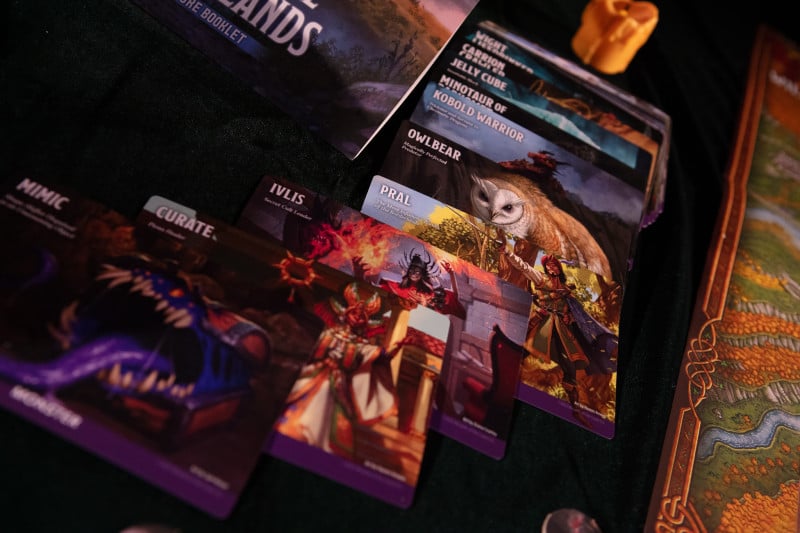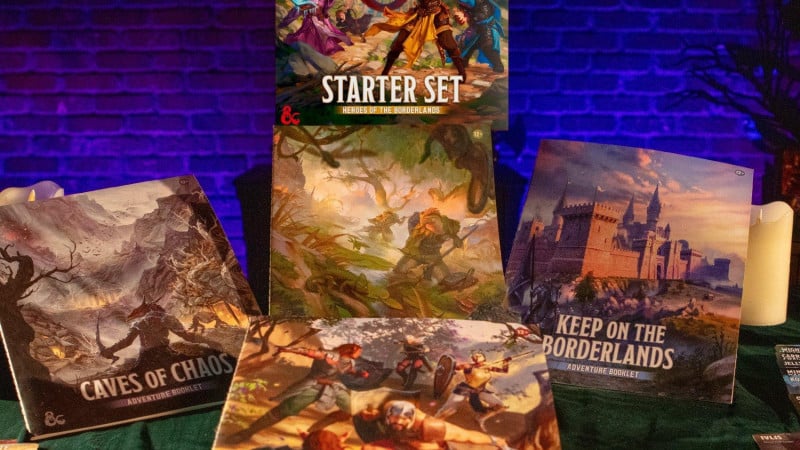Dungeons & Dragons, despite its unparalleled popularity in the tabletop role-playing space, is undeniably tough for newcomers to approach. There are so many elements to keep track of, and if you’re playing analog, not enough space to do it on a standard character sheet. While Dungeons & Dragons has released Starter Sets and Essentials Kits for Fifth Edition in the past, their latest iteration, Heroes of the Borderlands, is the most accessible version yet. It provides a simplified version of the game, chock-full of physical elements like cards and tokens that make the game easier to grasp. After getting a copy to check out myself, I’m impressed by how it all came together, and would easily recommend it as an introduction to anyone interested in trying the hobby.
First, a crucial disclaimer: I have not played this adventure, save for a brief session at Gen Con earlier this year. As such, my impressions are based on my solo dissection and reading of the box and its contents, as well as my comparison to past sets.
The most immediate difference between Heroes of the Borderlands and similar D&D box sets is its weight. Dragons of Stormwreck Isle, the most recent starter set, weighs about 1.2 pounds, containing only a few character sheets, a pair of booklets, and a set of dice. Meanwhile, my copy of Heroes of the Borderlands weighs a whopping five pounds; it’s densely packed with character class boards, cards for spells, monsters, and weapons, tokens for players and enemies, and nine double-sided maps. The latter game is more expensive ($49.99 rather than $19.99), but it earns that price point through material cost alone.
Of course, D&D doesn’t require most of the materials listed above, but they’re extremely useful for bringing new players into the fold. The premade character class boards are easy to read, and leveling up is as simple as flipping from one side to the other. They also have empty spots specifically for cards and tokens to represent weapons, spells, and hit points, so you don’t even need a pencil, and it’s a bit easier to visualize all the details that go into making a character work. Most crucially of all, it lowers the amount of knowledge the player needs to have prior to starting a game; as long as you have the right cards and tokens on your board, the bright, color-coded design is enough to guide you once you start playing.

The DM tools are just as useful. I always hate having to flip to the back of a book for a monster’s stats or copy extensive details into my notes. The purpose of a module is to take some of the prep work off a DM’s hands, and the adventure books do exactly that. Each room or encounter starts with a description of what to expect, including character names and quick run-downs on their relationships, and it also gives a list of which materials you’ll need, including tokens, cards, maps, and other handouts.
One of D&D’s biggest criticisms is the workload placed on the DM compared to other players; one person is tasked with keeping track of the world and all its details, both narrative and mechanical, while others get to focus on their own immersion. The tactile, organized, information-first approach to introducing people to the DM role is a huge step in the right direction, so much so that I find myself hoping to see it in higher-level modules someday.
Ideally, a role-playing game is played in a flow state, where the mechanics become a tool everyone uses to fluidly tell a collective story. The biggest hurdle for new players is getting enough of a grasp on those mechanics to transform them from an obstacle to a launchpad, and by sanding down some of that barrier to entry with so many tactile tools, it’s never been easier to get into the game.

